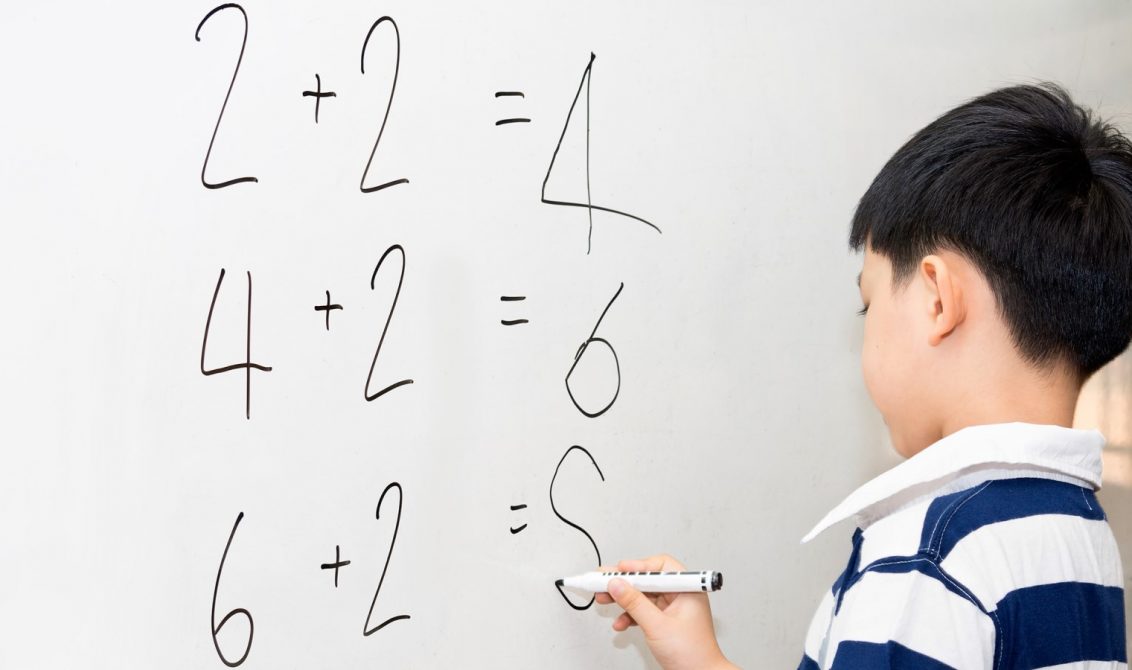
Dr. Natthapoj Vincent Trakulphadetkrai explores how students could deepen their mathematical understanding by creating their own mathematical story picture books.
Setting the scene
When Jane (pseudonym), a 9-year-old pupil, was asked by me what 4 x 7 equals to, she was able to give me the correct answer (28) effortlessly within a second. When asked to show me how she got her answer, she was also able to quickly and correctly use the column method to do so. Then, when she was asked to (contextually) represent 4 x 7 using a word problem, this is what she came up with: “A girl goes to the park, she finds these coins, 10p, 5p, 5p. She goes to the ice cream van. She wants one, one ice cream costs 20p, does she have 20p? Yes.” How Jane’s word problem is related to 4 x 7 remains a mystery.
What Jane demonstrates here is a classic example of pupils whose procedural fluency (i.e. the mechanic aspect of mathematical learning) in relation to multiplication is good, but have yet to fully grasp what multiplication means conceptually. As many mathematics education scholars have argued, in order to demonstrate conceptual understanding in mathematics, pupils must be able to represent mathematical concepts in different ways. One creative way to help pupils develop such ability is by getting them to create their own mathematical story picture books!
Mathematics learners as mathematical storytellers
While the idea of reading mathematical stories to pupils and designing mathematics teaching activities based on the plot and characters found in those stories is a relatively common mathematics teaching strategy, the idea of getting pupils to create their own mathematical story picture books to foster their mathematical understanding is much less so.
See examples of lessons using mathematical story picture books
What’s so special about creating mathematical story picture books? As with any storytellers, mathematical storytellers need to think carefully about the storyline. To come up with a mathematical storyline requires the storytellers to consider practical and meaningful applications of the mathematical concept in question. In brief, they need to contextualise abstract mathematical concepts.
Additionally, as the focus is on presenting the stories in the picture book format, storytellers are actively encouraged to think about page illustrations, and how best to communicate abstract mathematical concepts and situations visually to their readers.
Given representing mathematical concepts using multiple representations is a key feature of Mastery, the Government-backed East Asian-inspired mathematics teaching approach, it can thus be argued that teaching mathematics by getting pupils to create their own mathematical story picture books nicely aligns with the Mastery concept.
Moreover, not only could this teaching approach benefit pupils mathematically, it could also develop their language and creative writing skills and make possible a great cross-curricular teaching opportunity. Equally important, the approach would allow pupils to see mathematics in a different light – one that is less test-driven, and more fun and imaginative. This is crucial especially if we want to improve pupils’ perceptions of the subject.
What’s next for you?
Give this mathematics teaching approach a go! Getting pupils to create their own mathematical story picture books is appropriate for pupils of any age groups. For example, very young children could create a shorter version of the books (only a few pages) with the help of adults annotating their verbal storytelling, while older pupils could create a longer version of the books (10+ pages) more independently. If your class is new to writing mathematical stories, you may want to initially read, as a whole class, mathematical stories written by published authors to get a sense of common structures and styles of mathematical stories. The MathsThroughStories.org website has 500+ recommendations of mathematical stories.
If you want to learn more about key features of well-written mathematical story picture books, MathsThroughStories.org has recently summarised them.
______________________________
About the author
Dr. Natthapoj Vincent Trakulphadetkrai is a Lecturer in Primary Mathematics Education at the University of Reading’s Institute of Education, and the founder of MathsThroughStories.org.
Follow Dr Trakulphadetkrai on Twitter
Dr Trakulphadetkrai’s website
Follow MathsThroughStories.org on Twitter
MathsThroughStories.org official website
This blog post was originally published on the Pearson Primary Blog on November 6 2018.

